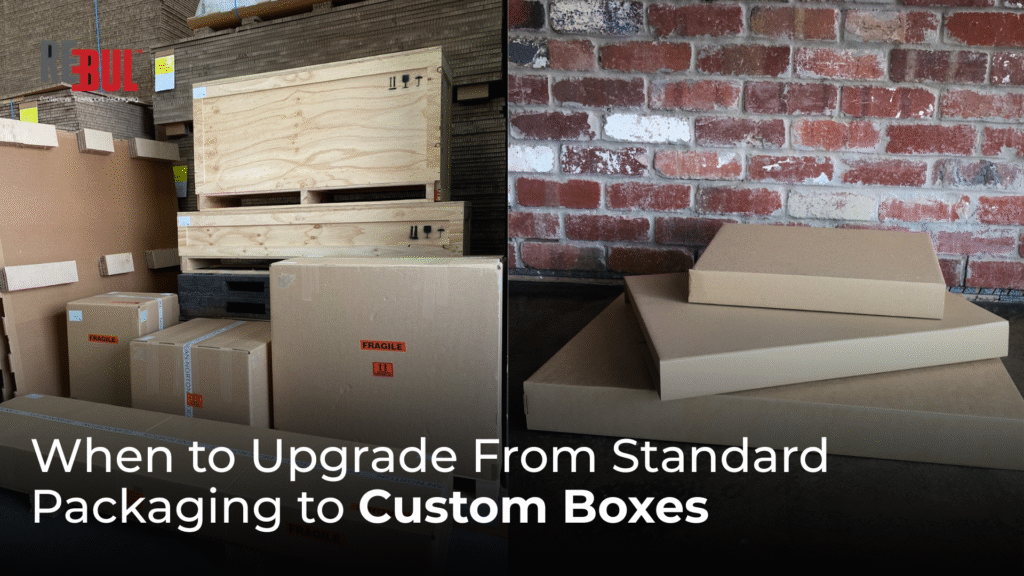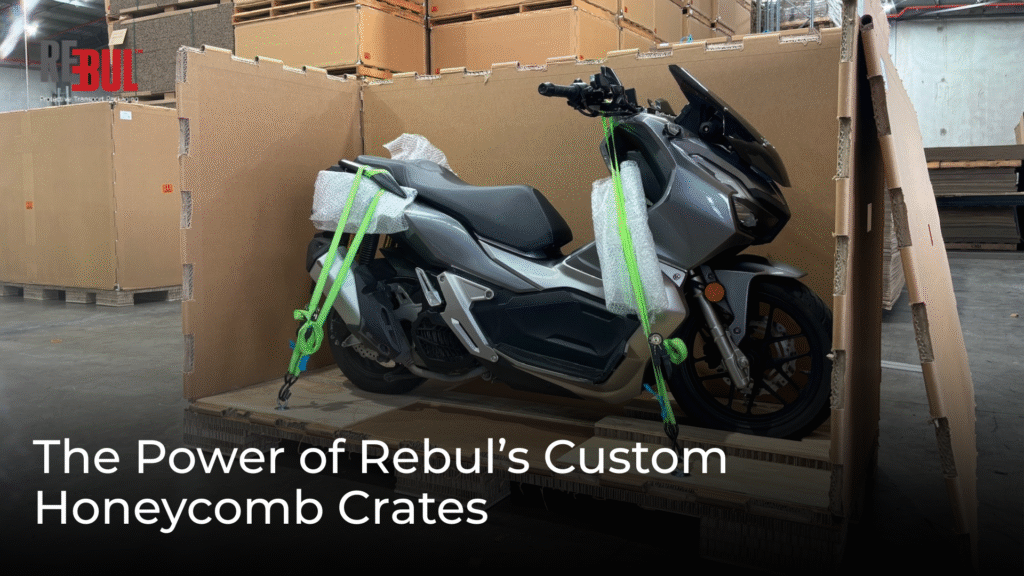Lightweight industrial packaging stands at the crossroads of cost, safety, and sustainability. Done right, it guards products like heavy‑duty crates while trimming freight weight, labor strain, and carbon output. This guide shows how modern materials, engineering, and testing combine to create packaging that feels light in hand yet performs like steel in transit.
The Challenge: Balancing Strength and Weight in Industrial Packaging
Shipping managers juggle tight budgets and tougher emission rules. Every extra kilogram invites higher carrier fees and penalties at ports and airports. Yet cargo still needs rock‑solid protection against impact, moisture, and vibration. Success hinges on smart material choices, precise structural design, and rigorous testing that proves lighter builds can survive real‑world abuse.
Why Lightweight Packaging Matters for Modern Supply Chains
Fuel surcharges rise with the scale. Lighter crates cut diesel burn, speed manual handling, and shrink carbon footprints. A box that weighs two pounds less can keep a pallet under a fee breakpoint or allow an extra unit per container-multiplying savings across thousands of shipments.
Worker safety also improves. Warehouse associates lift and pivot packages all day. Ten pounds off a crate, repeated hundreds of times, translates into fewer strains and lower compensation claims. Lighter units stack tighter, squeezing air gaps and raising truck fill rates.
Our Lightweight Edge at Rebul
At Rebul we marry decades of hands‑on craft with advanced material science. Our engineers build honeycomb panels, custom crate kits, and modular inserts that shave freight weight without cutting corners on safety. Clients tap our in‑house testing lab, CAD modeling, and rapid prototyping to move from sketch to shipment fast. Explore our Transport Packaging range and see how lighter crates can carry your business further.
Understanding Lightweight Industrial Packaging
A package earns the lightweight label when it provides equal or greater protection than legacy wood or thick corrugate while using less mass and volume. Engineers consider space efficiency, recyclability, assembly speed, and total cost-not grams alone.
Defining Lightweight Packaging in an Industrial Context
Designers benchmark stacking strength, puncture resistance, and vibration dampening against ISO 16245 and ISTA 3A, then strip every ounce that does not contribute to safety. Prototypes endure accelerated aging, humidity cycles, and drop tests. If performance matches or beats heavier builds, the weight savings move forward.
Key Benefits: Cost Savings, Efficiency, and Sustainability
- Lower freight and warehousing costs.
- Faster line speeds and fewer ergonomic injuries.
- Reduced greenhouse emissions per shipped unit.
- Easier compliance with waste‑reduction mandates.
Guidelines from the International Safe Transit Association prove that careful design can hit every metric without excess bulk.
Core Materials for Lightweight Yet Durable Packaging
Modern suppliers rely on engineered papers, advanced plastics, and bio‑based fibers that pack surprising muscle.
Advanced Cardboard and Honeycomb Structures
Hexagonal honeycomb boards sandwich kraft liners around recycled paper cores. The geometry spreads load broadly, achieving high compression resistance at a fraction of timber’s weight. Rebul’s own Honeycomb Packaging shields automotive parts, medical devices, and artwork while trimming crate mass by up to 60 percent.
Moisture‑resistant coatings now let honeycomb survive humid lanes. Multi‑layer edge bands reinforce corners, and peel‑and‑stick runners speed line assembly. These tweaks mean honeycomb pallets can lift engines, batteries, and ceramic tiles once limited to plywood skids.
Thermoformed Plastics: Strength Without the Bulk
High‑density polyethylene and polypropylene trays offer repeat‑use durability. Molds capture micron‑level detail, cradling irregular parts and eliminating loose void fill. Thick‑wall bases interlock with collapsible dividers, forming stackable totes that complete dozens of closed‑loop trips before recycling.
Recycled and Biodegradable Materials: Eco‑Friendly Options
Molded pulp, mycelium foams, and bio‑resins meet rising ESG goals. They biodegrade or feed recycling streams yet still pass drop tests for electronics and glass.
Design Principles for Heavy‑Duty Performance
Material alone does not guarantee success. Structural engineering turns lightweight panels into hard‑working crates.
Structural Integrity: Engineering for Load‑Bearing Capacity
Engineers map static and dynamic loads, then add ribs, corner blocks, and cross‑braces where stress concentrates. Double‑wall honeycomb pillars act like I‑beams, transferring stack weight straight to the pallet deck and matching the 2,000‑kilogram ratings of heavier crates.
Shock Absorption and Vibration Dampening Techniques
Foam pads, corrugated inserts, and floating decks shield sensitive electronics from truck vibrations. Layered honeycomb runners create built‑in suspension for glass panels and precision tools. Drop tests from 1.2 meters verify that acceleration stays below component limits.
Customization: Tailoring Designs to Specific Product Needs
Digitally guided plotters slice corrugate and honeycomb within half‑millimeter tolerances. CAD files of the product feed fit patterns automatically, eliminating excess filler and shortening time to market.
Innovations in Lightweight Packaging
Pioneering firms layer digital tech on top of physical protection.
Smart Packaging: Integrating Technology for Monitoring and Tracking
Embedded RFID tags and printable sensors log temperature, tilt, and shock events. Flexible circuits laminate onto the package, harvesting ambient radio energy, so no batteries are needed. Data funnels into cloud dashboards for lane‑by‑lane insight.
Modular Designs: Flexibility and Scalability in Packaging Solutions
Interlocking panels ship flat and snap together on site. Users adjust length and width on the fly, reducing SKU counts and storage footprints. One pharmaceutical distributor replaced seven crate sizes with a modular kit and cut packaging inventory by 80 percent.
Case Studies: Successful Implementations in Various Industries
- Electronics: A semiconductor maker swapped timber crates for honeycomb clamshells and slashed air‑freight weight by 42 percent, saving $180,000 per lane in one quarter.
- Heavy machinery: Precision gearboxes once shipped in plywood. Reinforced corrugate rings cut crate mass by 55 percent and reduced injury claims.
- Pharmaceuticals: Insulated molded‑pulp coolers held vaccines at 2‑8 °C for 96 hours while trimming landfill waste.
Compliance and Standards
Industrial shipments cross borders and sectors. Packages must meet multiple rulebooks.
Meeting Industry Regulations and Safety Standards
ISO 16245, ASTM D4169, and ISTA 3A outline drop, compression, and vibration tests. Passing grades reassure procurement teams and insurers.
Certifications: Ensuring Quality and Reliability
Forest Stewardship Council certification confirms ethical fiber sourcing. The FSC logo signals responsible purchasing and appeals to eco‑minded buyers.
Environmental Considerations
Lightweighting pairs naturally with sustainability goals.
Reducing Carbon Footprint Through Material Selection
Switching from timber to paper honeycomb can cut cradle‑to‑gate CO₂ emissions nearly in half per crate, according to Life‑Cycle Inventory studies.
Lifecycle Analysis: Assessing Environmental Impact
Engineers probe raw extraction, production, transit, reuse, and disposal. This cradle‑to‑grave audit spots hotspots for further cuts.
Recycling and End‑of‑Life Management Strategies
Clear labeling guides end users to recycling streams. Knock‑down designs enable component reuse or return for refurbishment.
Cost Implications and ROI
Finance teams scrutinize every packaging upgrade.
Initial Investment vs. Long‑Term Savings
Custom plastic tooling may cost more upfront than plywood, yet durable trays survive ten or more trips, collapsing total ownership costs.
Impact on Shipping and Handling Costs
Cutting a single kilogram per box saves thousands annually on lanes priced by volumetric weight. Fewer injuries slash workers’ compensation premiums.
Enhancing Brand Value Through Sustainable Practices
Lightweight eco‑friendly crates broadcast a brand’s commitment to responsible operations, winning bids from buyers who rank ESG high.
Implementation Strategies
Smooth rollouts follow a disciplined path.
Assessing Product Requirements and Constraints
Teams log fragility, weight, stacking orientation, and climate exposure. That data guides material and thickness choices.
Collaborating with Packaging Engineers and Designers
Cross‑functional workshops align marketing, logistics, and safety objectives. Rapid prototypes emerge when every stakeholder weighs in early.
Prototyping and Testing for Optimal Performance
Physical mockups run through drop towers, compression rigs, and vibration tables. Engineers iterate until units pass every trial with margin to spare.
Challenges and Solutions
Even proven projects hit hurdles.
Overcoming Material Limitations
Honeycomb resists vertical crush but needs edge protection against forklift tines. Edge‑board wrappers solve that exposure. Barrier coatings block humidity on ocean lanes, and graphite‑infused liners dissipate static for electronics.
Ensuring Consistency in Mass Production
Automated glue lines and precision die‑cutters keep tolerances tight. Statistical process‑control charts track burst strength in real time, flagging drifts before failure.
Adapting to Changing Regulatory Landscapes
New phytosanitary or hazmat codes can force design tweaks. Modular components swap quickly, avoiding full redesigns.
Future Trends in Lightweight Industrial Packaging
Emerging Materials and Technologies
Graphene‑reinforced films, nanocellulose papers, and algae‑based foams promise even lighter builds without sacrificing strength.
The Role of Automation and AI in Packaging Design
AI engines crunch drop‑test data and output geometry tweaks that shave single‑digit percentages-small numbers that add up across fleets.
Anticipating Market Demands and Consumer Expectations
E‑commerce growth pushes B2B suppliers toward parcel‑ready packs that protect goods while fitting courier size tiers. Brands that adapt early lock in lower last‑mile costs.
Conclusion
Lightweight industrial packaging lowers freight bills, speeds handling, and shows customers a brand that cares about the planet. Companies that embrace new materials and rigorous engineering seize an edge today and keep goods moving with confidence. Talk with Rebul’s specialists to discover how a lighter crate can power your next shipment.
Optimizing Costs with Smart Packaging Solutions
At Rebul, we focus on cost-effective packaging that balances protection, branding, and shipping efficiency. Our approach ensures that businesses don’t overpay for unnecessary features while maintaining durability and aesthetics. By leveraging innovative materials and efficient design, we help reduce costs without compromising on quality. See how our tailored packaging solutions can enhance your business at Rebul.
FAQs
- What makes a package “lightweight” in industrial use?
It protects goods as well as heavier options while cutting overall mass and volume. - Are honeycomb boards strong enough for heavy machinery?
Yes. Properly engineered honeycomb panels withstand high compression loads and distribute weight evenly. - How does lighter packaging lower shipping costs?
Carriers charge by weight and size. Reducing either figure drops per‑unit freight fees and fuel usage. - Can lightweight designs meet ISTA standards?
Absolutely. Engineers test prototypes against ISTA protocols and refine weak points until they pass. - Is lightweight packaging always more sustainable? Most of the time. Less material and fuel mean lower emissions, though full lifecycle analysis confirms the net benefit.



